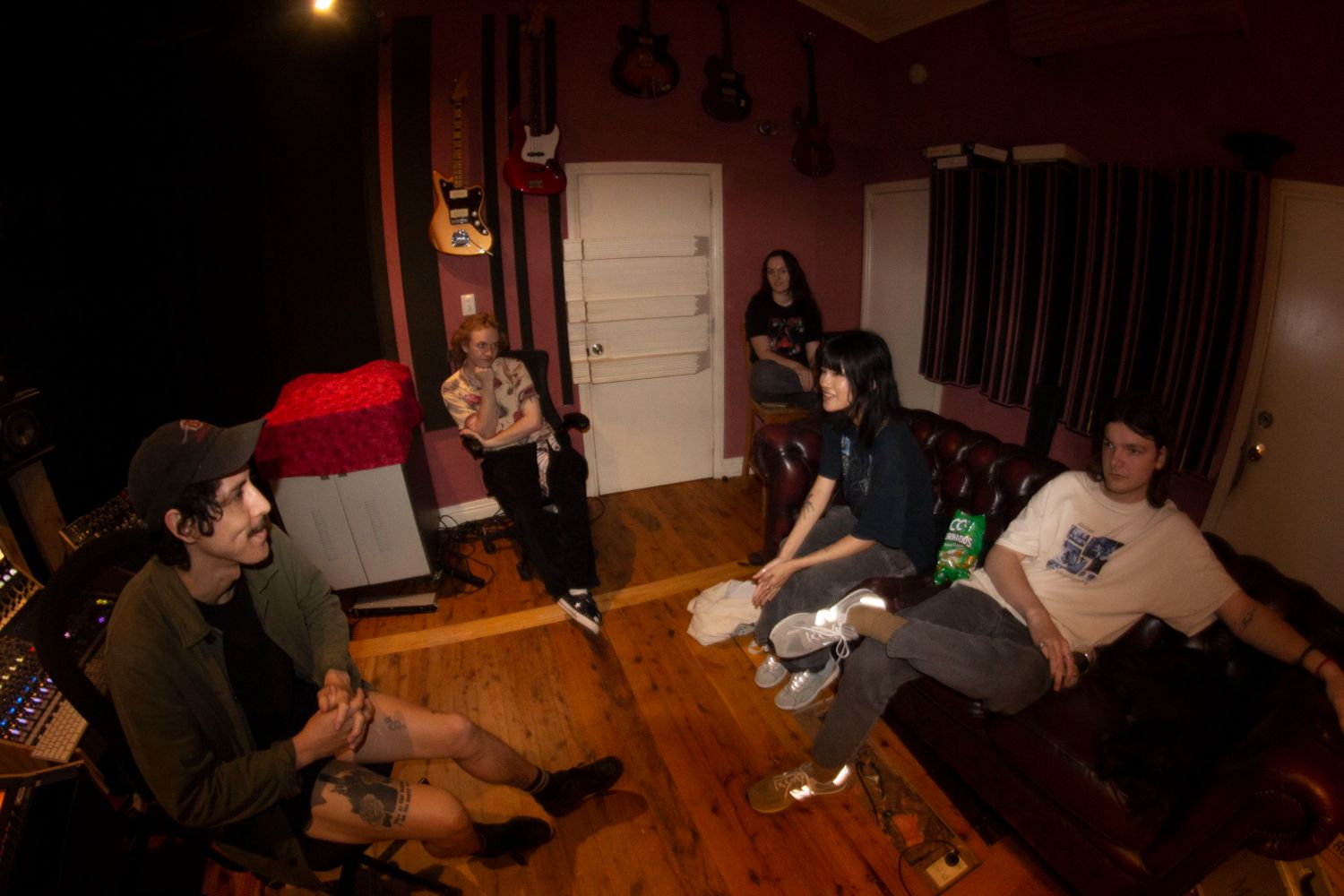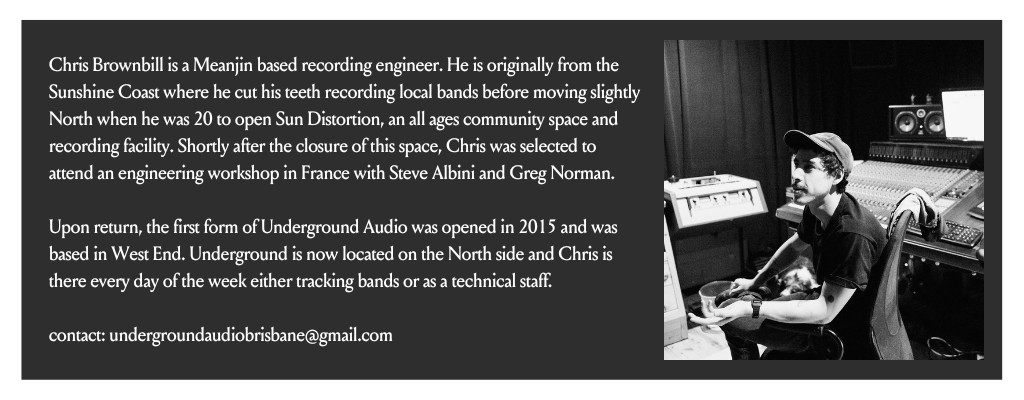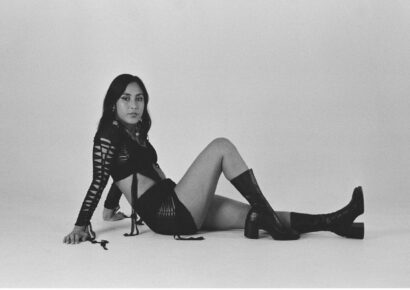Nylon Songs was released October 2022 by Colossus Records.
Hello dear reader and welcome to the first instalment of Notes From The Underground. Some of you may already be aware of my similarly titled newsletter that I’ve been frisbeeing into email inboxes for the past 5 years, well thanks to Mixdown it will now be extending into print form.
I happen to be one of those people that have made the ill-advised lifestyle choice of trying to run a Peter Sellers-esque situational comedy known by many as a recording studio. Shrinking budgets, the rising costs of real estate (and living in general), the home recording boom and the new threat of AI mixing and mastering services are all throwing punches at the old model that I’ve so erroneously subscribed to. And yet many of us are still here, outstretching our hands to the music community. Trying to be a resource in whatever way is possible and hopefully contributing to the culture in some form. On that note, I’m hoping this column can be an extension of that and can provide some legitimate insight into production, recording and mixing.
Read all our latest features and gear columns here.
To be in a control room brings me joy beyond what I can describe. Over the past 15 years I’ve probably made close to 600 records and throughout that day-in day-out repetition, it’s never felt like a grind. I do consider it a trade however, one that has no definable certification due to the state of flux of technology, practices and the industry as a whole. With this in mind I will not only be focusing on featuring records I’ve worked on with creative practitioners, but additionally some tutorials. Thank you for your attention and please feel free to reach out to me, us engineers love a chin wag when it comes to technical drivel!
Naaki Soul Nylon Songs
Sometime in the winter of ‘22 I was approached by songwriter Anika Z to make a full length record with a syndicate of the new Meanjin subculture youth, a mixed bag of what I came to discover was the next generation of punks, rabble rousers and artists that would form Naaki Soul. They had a history of failed attempts at making this record in bedrooms with various producers and had moved the goal posts to a larger facility.
Today I’d like to talk about the objective of a record like this and my approach to large ensembles that make big sounds. Conventional wisdom says to get everyone together and re-enact a gig with tape running, though I feel that to some detriment, contemporary production has been reduced to a glacial paced data entry exercise where everybody has to sit in a chair and play to a click. Not always the worst idea but sometimes a wrench in the works and almost always a budget blow out.
Our approach was different to this, yet not dissimilar to most guitar records I work on; to inject as much of the sense memory of live performance into the recording. This means tracking mostly everything live. This means air. For lack of a better term, “rock” records are generally devoid of air these days. With the advent of digital technology, synthetic drums and amp sims have become the norm and it’s becoming rarer to hear an ensemble pushing and pulling together in a live environment. We wanted people to hear the drums slapping off the walls of the space, oscillating speakers blowing back into the pickups of the guitar and the vocals echoing in a soundstage.
Recording a band live
The one potential issue with live tracking is having a perfect drum and guitar take and an imperfect bass or keys take. The workaround is to cut the best feeling performance and overdub various instruments over the top, this could mean any instrument that isn’t drums are up for contention. Throughout the session I will also have a permanent vocal mic set up that doubles as a room mic. This will have a chain annotated in Session Recall so I can patch it in at any point after the first song is laid down. Waiting until the very end of a record to smash out ten songs in a day is imprudent and will make a singer want to strangle you.
Tracking like this is not only efficient but it allows every step to inform the next. Rather than build up the sound brick by brick and discover you’ve streaked off the page, you are able to paint the whole thing coarse to fine. If the band walks in after the first take and something doesn’t sound exactly right, I will endeavor to fix it immediately.
The comfort of a band is everything, yet the primary obstacle remains headphones. No one really likes playing with headphones but if you have to, it needs to be ensured the headphone mix is on point. If it just isn’t on the cards, don’t be scared to open an isolation booth door and let that spill through. You would be surprised how little of an issue it often is as long as it doesn’t clash with an overdub (guitar solos, differing lyrics etc.)
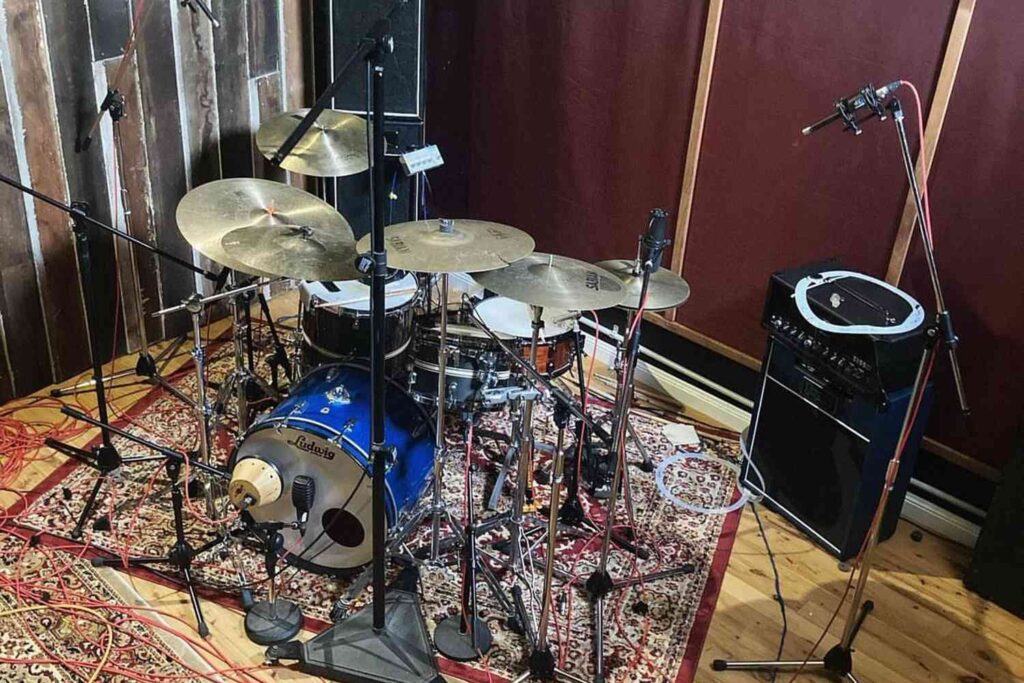
Another benefit of making a record this way is there ends up being less sterility in the final form. I once read an interview with Joe Chiccareli where he explained that mixing is largely an attempt to preserve the elasticity of the original first take and I feel much the same. Of course we often have to layer things and it’s an exciting and gratifying process, but oftentimes when everything is squished on top with fussiness and rigidity things can get a bit lifeless.
These are some of my tenets as a recordist and this project was a case in point for the argument that tracking a band in a facility that is purpose built is often imperative.
In further writings I will speak to making records in less than optimal environments with limited resources. I’ll also dig into some of the more practical aspects of traditional microphone technique and troubleshooting in a session.
I’m hoping these ramblings have motivated you to, when necessary, commit to the organic sound of what is happening in the room. Whether it be with your band or someone else’s. Find sounds that are exciting and roll tape on them. If anything sounds outlandish or extreme then maybe that is what it is supposed to be. If you leave everything up to plug-in/DAW world and punch your delay times statically and tweak everything to perfect pitch you may be doing more damage than good.
In terms of this project, I think Anika as a songwriter and lyricist is absolutely astounding and Naaki Soul as a unit are one of the most powerful and inspiring bands in the country at the moment. I shudder to think what this record could have been if they weren’t left to be in charge of that destiny. Ultimately their DNA is all over the thing and that is the goal.
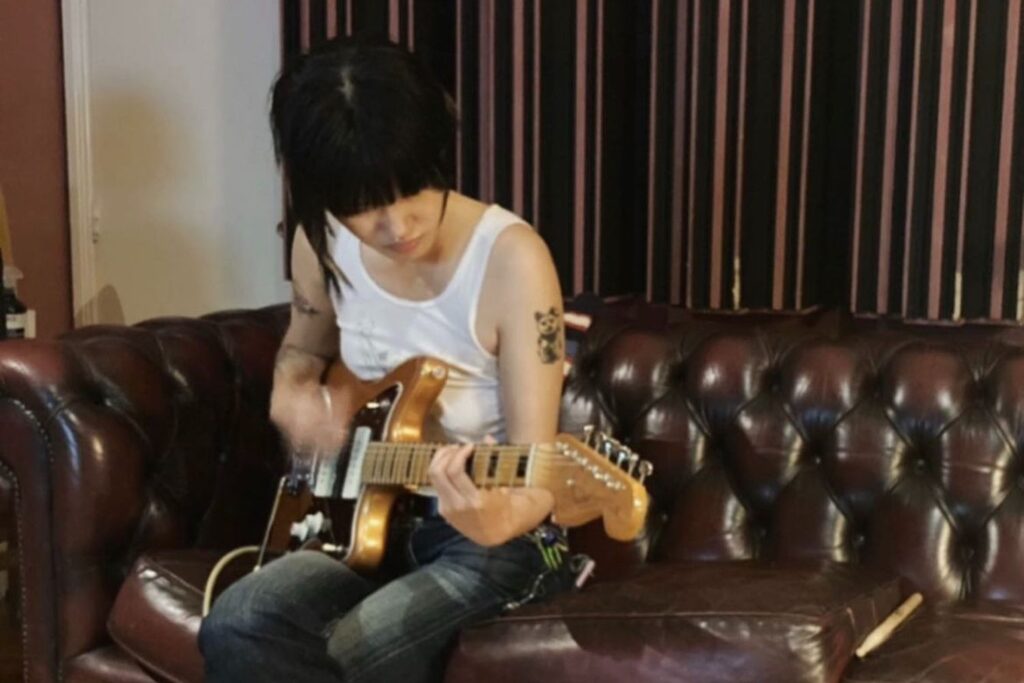
| Vocal Chain | Manley Ref C > DBX902 > Distressor > 1176 |
| Anika (Guitar) | Troy Van Leeuwen Jazzmaster > Verellen Loucks > Blacktone 6×12 cabinet loaded with Eminence Texas Heats + Lorantz greenback > beyerdynamic M160 + beyerdynamic M88 > Thermionic Culture Phoenix preamp |
| Isaac (Guitar) | Gibson SG > Marshall JCM800 > Blacktone 2×12 cabinet loaded with 65 watt creamback + Lorantz Greenback > beyerdynamic M160 + Heil PR30 > JLM TG2 |
| Ellie (Electric bass) | Fender Player Jaguar > Traynor TS-50b > unknown 1×15 loaded with Eminence delta 15 > Heil PR40 > JLM NV500 > JLM LA500 |
Keep up with Naaki Soul here.
